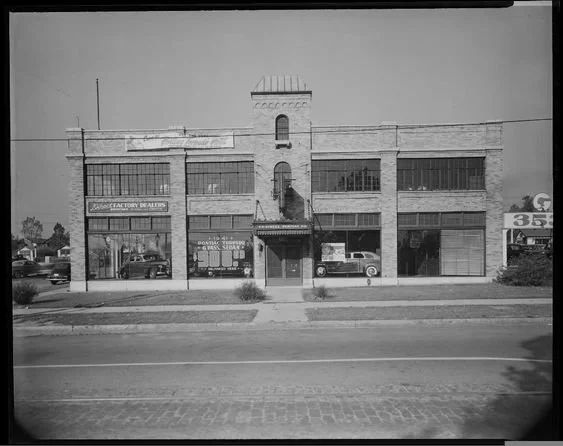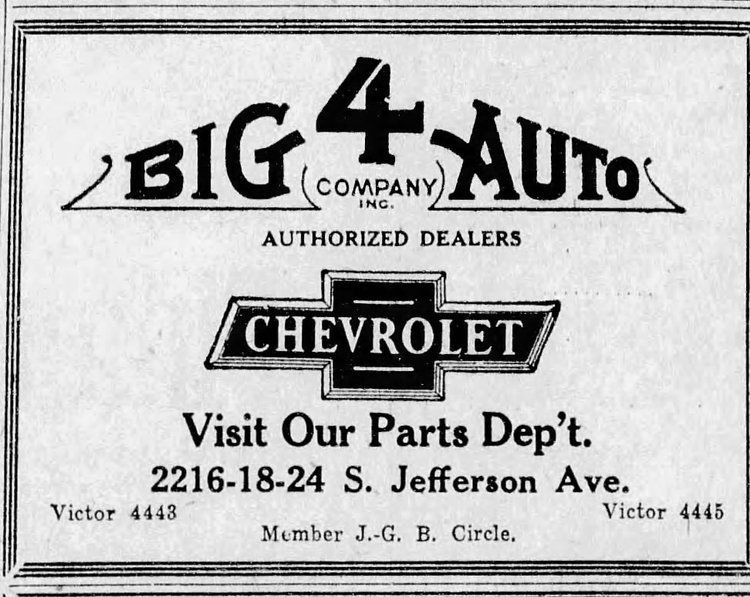The showrooms and auto dealers of the past worked their way into the city fabric much better in the past. Look no further than Auto Row on Locust Street in the Midtown Neighborhood.
The buildings were urban and well designed compared to the modern suburban model of bland buildings and acres of asphalt near Interstates.
Even in my part of the city, around I-44 and Jefferson, there used to be auto dealerships. They were much smaller and better incorporated into the city than what you’ll see today.
Former Big 4 Chevrolet parts department buildings are now seeing many new uses in an urban setting in the McKinley Heights Neighborhood.
Cars are going nowhere. They will always exist, but the dealerships and parts suppliers can and should be smaller and better incorporated into our city. The modern supply chain and economy begs it…less bulging inventory, just in time and efficiency. And why can’t St. Louis be on the cutting edge of modern land use?
The Mercedes Benz dealership on Hampton and I-64 is a great example of better use of land.
Hampton and Oakland - Cheltenham Neighborhood - St. Louis, MO
Many people I hang out with hate auto-centric land uses in cities like St. Louis. I do too. But, I own three cars and use things like car washes every now and then. Even drive-thrus, I’m no angel. I sporadically use these.
They too can be better, look no further than the small suburb west of St. Louis: Clayton, MO (population 17,355). They have a car wash just off of Hanley Road that is much better than the eyesores that exist on Hampton Avenue, Kingshighway, Jefferson and many other streets in St. Louis.
While using the suburbs as an example for decent urban design is a rarity for me, there are a few examples:
This carwash is in the small city of Clayton, MO, a suburb of St. Louis. Meanwhile, we mow down cool older buildings and urban scaled properties for suburban garbage.
Cars are a modern necessity and an American preference for transportation. They are going nowhere, but we can build auto-centric uses and businesses in more thoughtful ways.
The suburban rubber stamp should not be used in legacy cities like St. Louis.




